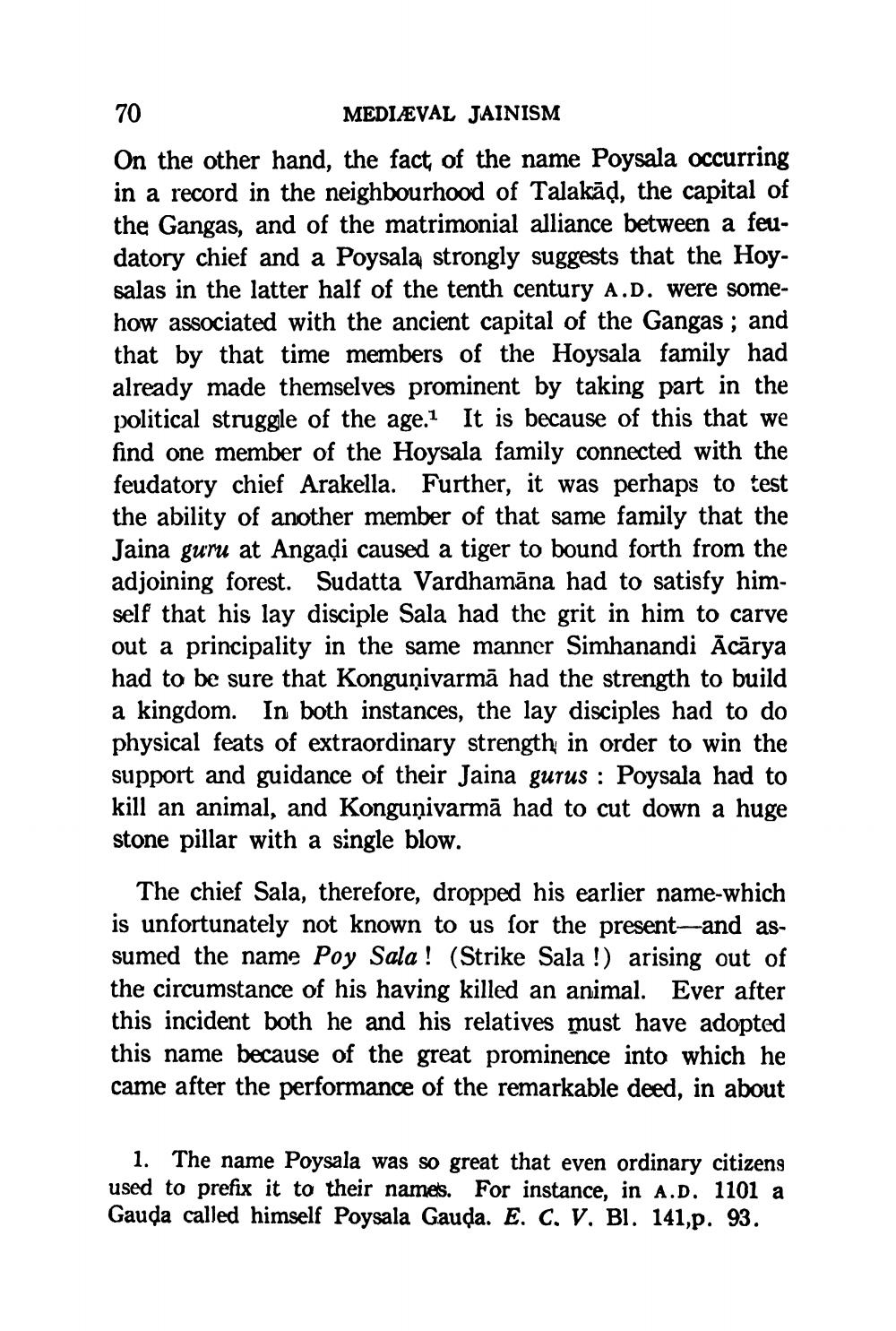________________
70
MEDIÆVAL JAINISM On the other hand, the fact of the name Poysala occurring in a record in the neighbourhood of Talakād, the capital of the Gangas, and of the matrimonial alliance between a feudatory chief and a Poysala strongly suggests that the Hoysalas in the latter half of the tenth century A.D. were somehow associated with the ancient capital of the Gangas; and that by that time members of the Hoysala family had already made themselves prominent by taking part in the political struggle of the age. It is because of this that we find one member of the Hoysala family connected with the feudatory chief Arakella. Further, it was perhaps to test the ability of another member of that same family that the Jaina guru at Angaļi caused a tiger to bound forth from the adjoining forest. Sudatta Vardhamāna had to satisfy himself that his lay disciple Sala had the grit in him to carve out a principality in the same manner Simhanandi Ācārya had to be sure that Konguộivarmā had the strength to build a kingdom. In both instances, the lay disciples had to do physical feats of extraordinary strength in order to win the support and guidance of their Jaina gurus : Poysala had to kill an animal, and Konguņivarmā had to cut down a huge stone pillar with a single blow.
The chief Sala, therefore, dropped his earlier name which is unfortunately not known to us for the present-and assumed the name Poy Sala! (Strike Sala !) arising out of the circumstance of his having killed an animal. Ever after this incident both he and his relatives must have adopted this name because of the great prominence into which he came after the performance of the remarkable deed, in about
1. The name Poysala was so great that even ordinary citizens used to prefix it to their names. For instance, in A.D. 1101 a Gauda called himself Poysala Gauda. E. C. V. Bl. 141,p. 93.




